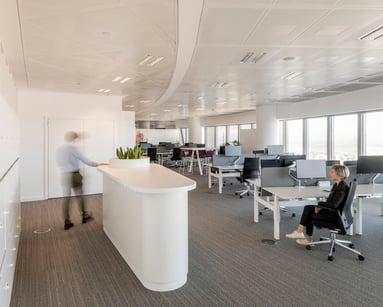Lab real estate: navigating the shifting landscape of supply and demand
Daniel Maldonado, Managing Director, Life Sciences, Americas weighs in on key factors shaping life sciences real estate with Bisnow
The US life sciences market has navigated a challenging economic climate in recent years, including the turbulence caused by the global pandemic. The once hot lab real estate market is experiencing a cooldown. While recent JLL reports show a 29% increase in tenant demand quarterly for labs in major hubs like San Diego, San Francisco, and Boston, a surge in new supply is creating headwinds for developers.
This oversupply is causing a "flight to quality," where tenants prioritize modern, well-equipped facility design. This leaves older facilities struggling to attract tenants and secure leases. Large developers are even re-evaluating construction projects due to the glut. Major players are selling off underperforming assets as tenants are doing more with less and reducing demand.
The future of these major markets hinges on the ability to repurpose or redevelop older lab spaces to meet the evolving needs of tenants.
Adapting lab space to meet evolving needs
Boston's once-booming life sciences market is facing a harsh reality.
Here’s why:
- Oversupply: There's a lot of new lab space being built, but not enough companies looking for it, which is making things difficult for the industry
- Flight to quality: Tenants are prioritizing modern, Class-A labs, leaving older spaces struggling. This trend mirrors the office market – evolving life sciences demands adapting workplaces to keep talent engaged.
- Shorter leases: Traditionally, lab leases were lengthy. Now, tenants are seeking more flexibility, with average lease terms dropping from 7 years (2022) to just over 5 years (2024).
“Among the big three markets, Boston has the highest vacancy rate…it’s a very challenging market nowadays.” Daniel Maldonado, Managing Director – Americas, Unispace Life Sciences
San Diego's market poised for faster recovery
Unlike Boston, San Diego hasn't seen a glut of new lab space construction, except for downtown.
- VC funding: The city has attracted a significant amount of venture capital funding in 2024 ($1.37 billion) compared to Boston ($1.8 billion).
- Big pharma influx: Big pharmaceutical companies are making major moves in San Diego, with firms like Bristol Myers Squibb and Pfizer leasing large spaces. While demand for lab space is currently lower (1.7 million sq ft) than Boston (1.9 million sq ft), the influx of funding and big pharma activity suggests a faster recovery for San Diego's life sciences market.
San Francisco startups drive life science leasing activity
- Startup haven: Unlike Boston and San Diego with large companies, San Francisco's growth is driven by startups and smaller clients. This creates a challenge for large lab projects designed for bigger tenants.
- Demand is on the up: Despite over 22 million sq ft of construction and planned space, demand is reaching 2.5 million sq ft and could hit 3 million.
- Optimistic market due to potential future investment: Venture capital is expected to grow as smaller firms get acquired, leading to more startups and further demand.
Biomanufacturing boom on the horizon
The Research Triangle (Duke University, North Carolina State University and the University of North Carolina) is attracting a lot of attention as a potential hub for biomanufacturing, particularly in the promising GLP-1 weight-loss drug sector. This is due to a combination of factors: a critical mass of talent, development opportunities, and lower operating costs compared to other regions.
Daniel shares that he is excited about the large number of drugs awaiting FDA approval this year, which could translate to a surge in new production facilities. The Research Triangle and surrounding areas are well-positioned to capitalize on this growth with development-ready sites.
Read full “State Of Lab Real Estate: How The Biggest Markets Are Slogging Through Supply” article in Bisnow
About Daniel Maldonado, Managing Director – Americas, Unispace Life Sciences
 Daniel is an experienced executive with international experience in operations, strategic planning, business development, commercial and contractual analysis in the construction industry. He is responsible for leading Unispace Life Sciences growth strategy across the Americas.
Daniel is an experienced executive with international experience in operations, strategic planning, business development, commercial and contractual analysis in the construction industry. He is responsible for leading Unispace Life Sciences growth strategy across the Americas.
Follow Daniel on LinkedIn.
Additional resources:
While Life Sciences Leasing Slumps, Evolving Investment Market Gears Up For Turnaround


